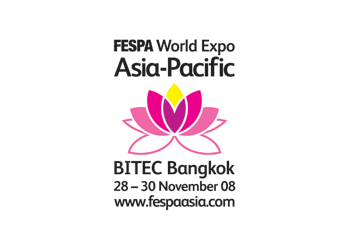
Attendance at the world’s biggest wide format show Fespa in Cologne last month sent records tumbling, while organisers say a market survey says strong growth in the industry will continue. The five day exhibition – from May 18 to 22 – encompassed screen, digital and textile, an education hub, and a wrap and sign specialist area.
More than two thirds of its visitors came from outside Germany, a record, and more than 50 per cent of its visitors stayed for more than one day, setting another record. Fespa the results from its global survey, which it says points to an ever brighter ‘future for the sector’. The research highlighted industry optimism, with 80 per cent of respondents either optimistic or very optimistic about the future, that optimism based on solid revenue growth. Overall revenue growth from 2007 to 2015 was averaging about nine per cent CAGR for the overall business, and seven per cent for digital wide format. Customer demand it says was the driving force to improve efficiency, enabling faster job turnaround, just-in-time delivery, delivery to the point of need, and versioning/personalisation. Survey statistics says some 70 per cent of respondents expect these four key customer trends to increase or stay the same, reinforcing the notion that today’s print businesses are now customer-service driven. Banners (49 per cent), posters (40 per cent), signs (38 per cent) and billboards (37 per cent) remain the top four products being produced by respondents, according to the data. A huge growth area is experienced in textiles for garments, textiles for décor and packaging samples, with close to 80 per cent of respondents reporting an increase in demand for these applications.
Respondents reported an increased adoption of digital production for many of these products, with garments, decals and printed electronics most frequently predicted to migrate to digital in the future. The changing applications mix is also reflected in the rise of rigid materials, which now represent 25 per cent of output among respondents. More than half of Fespa Print Census participants said they intended to buy digital wide format printing equipment, with a mean spending plan of close to Euro100,000. Plans for purchasing were dominated by UV printers (27 per cent), textile printers (21 per cent), solvent printers (17 per cent), eco-solvent printers (16 per cent) and latex printers (14 per cent). Contour cutters and laminators top respondents’ planned acquisitions in finishing. The data shows 45 per cent of those investing are motivated to do so by the move into new markets with new products or services. Investment is also driven by the desire to enhance print quality (43 per cent), increase capacity (37 per cent), improve output speed (34 per cent) and reduce unit costs (33 per cent). Some 36 per cent of respondents said live media and LCD screen advertising had impacted the wide format business, with three quarters of the participants say they expect these technologies to impact on their business in the foreseeable future. And of those surveyed 31 per cent said they planned to offer digital signage solutions to their customer base in the next 12 months. More than 1200 respondents worldwide fully completed the survey between May 2014 and April 2015. Some 50 per cent of respondents were from the Americas, 42 per cent from Europe and eight per cent from the Asia Pacific region. Respondents represent the full spectrum of print businesses, including screen and digital printers (34 per cent); commercial, quick printers and reprographic shops (15 per cent); sign makers (13 per cent); graphic designers (7 per cent); advertising agencies (5 per cent); and others.
Comment below to have your say on this story.
If you have a news story or tip-off, get in touch at editorial@sprinter.com.au.
Sign up to the Sprinter newsletter



